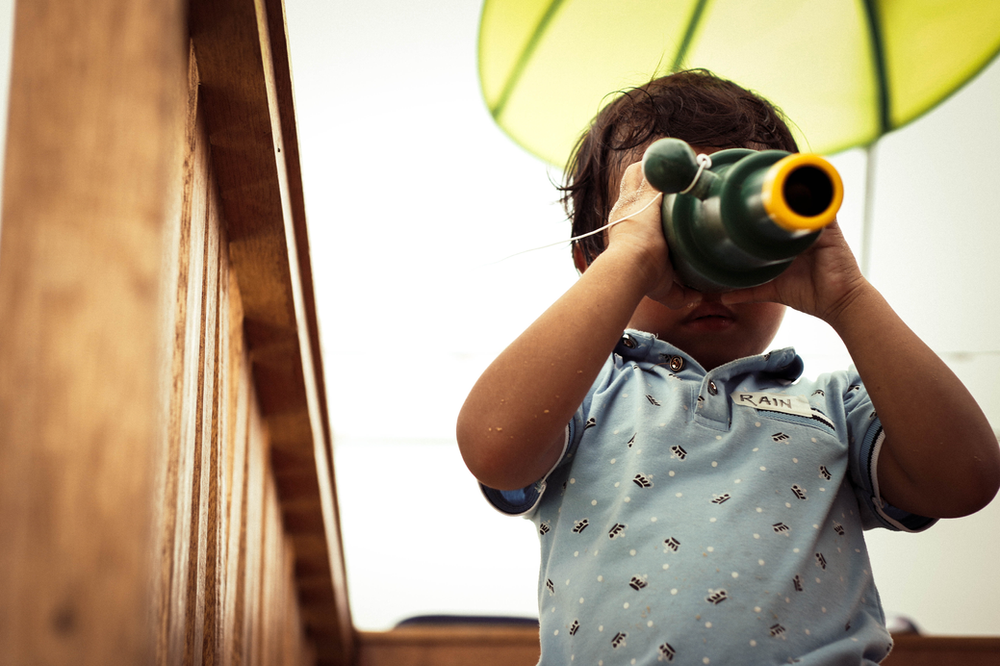
What are the qualities of the Montessori materials? They are didactic, with a singular, isolated concept for the child to master. They are elegant, presenting the simplest and most beautiful experience of that concept. And they are self-correcting, allowing the child to know for themselves whether they have mastered the lesson.
The self-correcting design of the materials is essential, even more so, it’s arguable, than the elegance. The child’s intrinsic motivation, their agency and their self-efficacy, are all a result of their ability to tell for themselves whether they are on the right path.
We know this. And yet…
The child leaves a lesson incomplete. We require them to return to the material and finish it before putting it away.
The child returns a material to the shelf with the lid askew. We urge them to go correct it before they move on.
The child looks up to catch our attention on the completion of the table-washing we’ve directed them to. “Great job!” We commend, before allowing them to move on.
The self-correcting design of the materials is both essential and really easy to disrupt. When we interrupt a child’s attention to remind them of the box lid, or to make them return to work they’ve abandoned, or to commend them for work of which we approve, we shift the control of error from the material to ourselves. We interject before the child has had the opportunity to notice the box lid or to reflect on their own accomplishment, and we subtly, with all good intent, with, truly, the best of intentions, undo the genius of the design.
We know that the materials are self-correcting. Indeed, when we write out all those lesson plans or take our practical exams as teachers, we have to identify the control of error for each lesson. When we design our own materials for the children, we have to identify the control of error. When we introduce parents to the classroom or the lessons, we describe the self-correcting design.
And yet we interfere. Why?
Maybe we are afraid that the design of the materials themselves will not be enough for the child to notice their errors. Maybe we are afraid that, in these subtle designs, the child will overlook what they were supposed to attend to. That they’ll move on. That we have to teach them to notice.
But children are natural noticers. They see the smallest details. They remember the sound of your keys in your bag, and know to ask about the scuffs on your shoes. It is children’s ability to notice that makes the self-correcting design of the materials so genius. And it’s our inability to notice that makes us doubt their reliability.
We interfere because we mistake the child’s disinterest for a lack of notice. The child will walk away from materials that are not satisfying to them. But they will just as eagerly attend to the ones that are. And in the meantime, as we are trying to match the child to the motive, we need to take care not to correct them out of their own agency. Instead of correcting the child who has abandoned material behind them, learn to look for what drew their attention instead. As teachers and parents, we need to learn to notice what the child notices, rather than punishing them when what appeals to us holds little interest to them.
The child develops attention from the practice of attending. The child develops concentration from the practice of concentrating. Not from our reprimands. Not by us insisting that they sit still and finish their work, Not when we interfere with their spontaneous attention by forcing them first to finish the lessons we have chosen for them. Before we insist that a child stop what they’re doing to do what we would have had them do instead, we need to notice what it is that they’re doing. Maybe what “distracted” the child was another friend in need of help. Maybe what “distracted” the child was the realization that a lesson they had been longing for was finally available. Maybe what “distracted” the child was the spontaneous engagement of their spirit, in attention to wonder. Maybe it was the challenge of the material, or a cognitive confusion from which they wanted distance. To know, we need to re-learn to notice the way that children notice, to see not only what we want to see, but the tiny details in front of us.
We want to move toward perfection, but we want to know for ourselves that we are moving in that direction. We cannot lecture the child about what we want them to know for themselves. We can only provide the environment within which they can learn from their own activity, and thee space within which to do so, without our agenda, without our punishments or our rewards, without our interruption. With our patience, with our faith, and with our noticing.
* A response to Chapter 25: Error and its Control. The Absorbent Mind. M. Montessori
